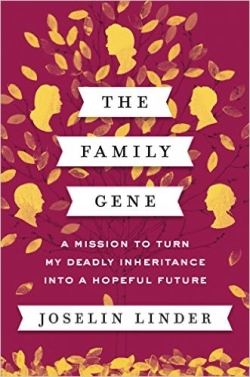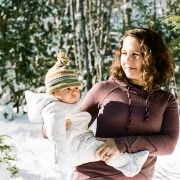As scientists learn more about disease-causing mutations in the Ashkenazi Jewish gene pool, it becomes increasingly urgent for couples in this demographic to undergo genetic testing before having children. The likelihood of Tay-Sachs, Gaucher disease, cystic fibrosis, and other genetic diseases are significantly more common among Jews of Eastern European origins because of centuries of geographic and religious isolation and in-marriage within the “tribe.”
Tests for many genetic diseases are available to determine whether a parent-to-be is a carrier, and through ever-evolving fertility methods, it is increasingly possible, though not without controversy, to ensure healthy offspring.
But what happens when a new genetic disease appears in the genome?
Joselin Linder, a contributor to the New York Post and NPR, has written a memoir of her family, which has the distinction or misfortune of being host to a founder mutation – the first known incident of a potentially deadly liver dysfunction. The Family Gene: A Mission to Turn My Deadly Inheritance into a Hopeful Future examines not only the science behind treating this disease, but the psychological toll of knowing one's genetic inheritance may include “a ticking time bomb.”
Linder's first inkling of a problem arose when her scrupulously healthy and athletic father began to experience swelling in his ankles. This led to difficulty breathing, and the discovery of lymphatic fluid, or chyle, filling his abdominal cavity. When no explanation for the chyle was found, doctors questioned his cardiac health and incidence of a repaired childhood murmur. This yielded no answers, but a glimpse into his family's history brought a few things to light: unexplained swelling and fluid accumulation was the cause of death or discomfort for family members in at least two previous generations.
These revelations about her family’s medical history impact Linder’s mental well-being, causing her to become lethargic as she contemplates the increasing odds of her contracting the mysterious ailment that led to her father’s agonizing death.
I was caught in whatever state I was in. If I was eating, it was really hard to stop. If I wasn't eating it was really hard to start. If I was sitting, why stand? If I was standing, why sit? Playing or not playing computer solitaire. Drinking or not drinking whatever alcoholic beverage was closest. I closed bars because I couldn't leave. I became practically agoraphobic because I couldn't go out. I couldn't get a job because I didn't have a job...I didn't have any wishes anymore.
Linder's writing voice, which attempts to recapture the internal monologue of a traumatized young woman, sometimes slips into false-sounding colloquialisms, such as “for realsies.”
Where she excels is in her clear scientific explanations of genome mapping, her family's genetic mutation, and how the resulting disease affects body function:
There are blood pressures in our liver that pull blood from our intestines and our spleens in order to purify it...But in my family, a mutant gene causes liver pressures to become confused and the liver no longer is able to properly siphon the toxins out of our blood.... It's this little glitch that causes this complication throughout our bodies. When it does its worst, it tackles our lymphatics, slowly knocking out our body's ability to absorb nutrients, causing us to slowly starve.
The team of doctors and geneticists at Brigham and Women's Hospital, led by Dr. Christine "Kricket" Seidman, who charted the disease, began its work largely in the dark, knowing only the disease’s symptoms. In mapping Linder’s genome, the team traced the genetic variant to the X chromosome. This discovery allowed her sister and brother-in-law to conceive a child using in vitro fertilization to create a variant-free embryo.
The still unnamed genetic variant that has plagued Linder's family has ended with her generation, as she and her husband won't have children. The symptoms she, her sister, and cousin experience are somewhat controlled via medication. And as genetics and genomics continue to evolve an increasing number of individuals will be able to overcome what might otherwise have been their DNA destiny.
The Family Gene: A Mission to Turn My Deadly Inheritance into a Hopeful Future is a worthwhile read that is sure to hit close to home for anyone in a genetically compromised population or family.
Courtney Naliboff lives, writes, teaches, and parents on North Haven, an island off the coast of Maine. She is a columnist for Working Waterfront, and writes about rural Jewish parenting for Kveller.com.
View all posts by Courtney Naliboff
Give to the URJ
The Union for Reform Judaism leads the largest and most diverse Jewish movement in North America.

